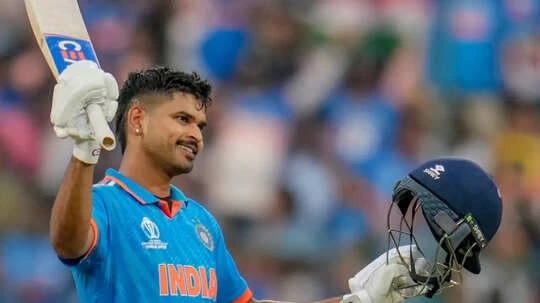Fresh medical evaluations have recommended that Shreyas Iyer avoid any high-intensity work and adhere to a highly supervised, graded rehabilitation program, which will keep him out of action for a considerable amount of time.
The update arrives when the India vice-captain is still recuperating from the abdominal injury he sustained during the ODI series against Australia.
On October 25, during the third ODI in Sydney, Iyer landed awkwardly while making a catch, which raised a lot of concern inside the Indian camp right away. Later, the BCCI verified that he had suffered a blunt-force abdominal injury that led to internal bleeding and a laceration to his spleen. After a brief procedure to stop the bleeding, he was sent to the Intensive Care Unit (ICU) for observation before being released once his health had stabilised.
Iyer has been under constant medical observation since coming home. According to recent reports, he had an ultrasonography (USG) scan done close to his home earlier this week. Renowned sports medicine expert Dr. Dinshaw Pardiwala examined the results. Positive results from the most recent scan showed that Iyer’s recovery was progressing steadily.
Iyer has been approved to start basic isometric exercises and return to regular daily activities based on the results of the present examination. In order to prevent aggravating the spleen injury, he has been recommended to refrain from any training that could raise intra-abdominal pressure for at least the next month.
At the two-month mark, a second USG scan is part of his rehabilitation plan. He will only be permitted to start organised rehabilitation at the BCCI’s Center of Excellence (CoE) in Bengaluru following the results of the subsequent scan, guaranteeing a precise and cautious return to full fitness.
It is clear from the timeline that Iyer will be out for at least two or three more months. He will therefore miss the forthcoming ODI series against South Africa and New Zealand, and his ability to play in subsequent assignments will depend on how quickly he recovers. For the time being, the most important thing is to make sure the 29-year-old heals completely and safely before returning to competitive cricket.
